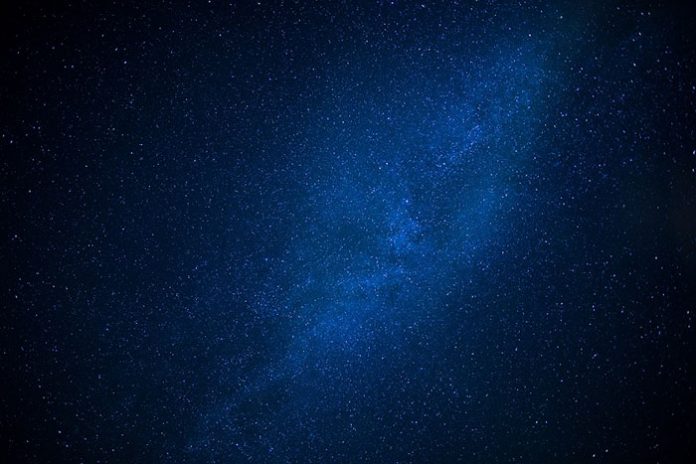Astronomen krijgen gewoonlijk informatie over verre sterrenstelsels door middel van hoogenergetische straling, zoals röntgenstraling. Het is uiterst ongewoon om UV-straling met relatief lagere energie te ontvangen van oude sterrenstelsels zoals AUDs01. Dergelijke fotonen met lage energie worden meestal onderweg of door de atmosfeer van de aarde geabsorbeerd. Hubble Tussenruimte Telescope (HST) has been very helpful in avoiding effects of earth’s atmosphere but even HST could not detect signal from this melkweg probably due to noise.
Nu, de ultraviolette beeldvorming telescopen on Indian satellite AstroSat has detected extreme UV light for the first time from the melkweg AUDFs01 situated 9.3 billion light-years away from Earth which is remarkable1.
Vandaag kunnen we kijken naar de universum en zie sterren en sterrenstelsels miljarden jaren geleden gevormd omdat het intergalactische medium transparant is voor licht. Dit was ongeveer de eerste paar honderd miljoen jaar na de oerknal niet het geval. De periode die astronomen Kosmische Donkere Middeleeuwen noemen, was de tijd waarin het intergalactische medium gevuld was met het neutrale gas dat hoogenergetische fotonen absorbeerde en de universum opaque to light waves. It was the period starting from the time when cosmic microwave background radiation emitted up to the time when first sterren en melkweg werden gevormd. De universum then entered into what is called the Epoch of Reionization, when the dark matter started to collapse due to its own gravity and eventually started forming the sterren and the galaxies.
Kosmologen verwijzen naar roodverschuiving z om een kosmisch tijdperk aan te duiden. De huidige tijd wordt aangegeven met z=0 en hoe hoger de z-waarde, dichter bij de oerknal. Z=9 geeft bijvoorbeeld een tijdstip aan waarop universum was 500 million-year-old and z=19 when it was only 200 million-year-old, near Dark Age. At higher z values (z ≥ 10) it becomes extremely difficult to detect any object (star or melkweg) due to sharp decline in inter galactic medium transmission. Scientists have been able to observe quasars and the galaxies up to z approximately equal to 6.5. Theories suggest that the sterren and the galaxies could have been formed much earlier at say higher z values and with advancement in technology we should be able to detect fainter objects at higher z values also [2]. However, most of the detection of galaxies are limited to approximately z=3.5 and are detected in the X-rays range. It is extremely difficult to detect the stars and galaxies in the extreme ultraviolet as it is heavily absorbed in the atmosphere.
Group of scientists led by Saha at Inter-University Centre for Astronomy and Astrophysics (IUCAA) were able to achieve this unique feat using Ultraviolet Imaging Telescope (UVIT) aboard the Indian satellite AstroSat . They observed the Galaxy AUDFs01 located in the Hubble Extreme Deep field using extreme-UV light from the melkweg. It could be possible because the background noise in the UVIT detector was much less than the ones on HST. The discovery is important as it opens up a new domain for detection of far off galaxies in the EUV range.
***
Referenties:
- Saha, K., Tandon, S.N., Simmonds, C., Verhamme, A., Paswan A., et al. 2020. AstroSat detection of Lyman continuum emission from a z = 1.42 melkweg. Nat Astron (2020). DOI: https://doi.org/10.1038/s41550-020-1173-5
- Miralda-Escudé, J., 2003. De donkere leeftijd van het universum. Wetenschap, 300(5627), blz. 1904-1909. DOI: https://doi.org/10.1126/science.1085325






































